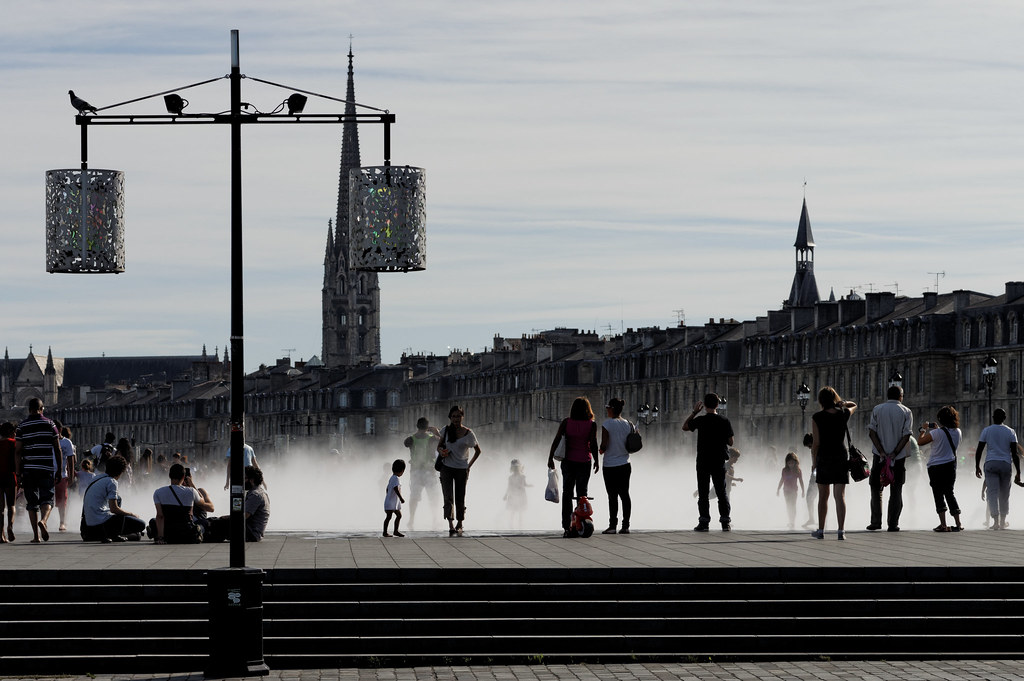 Originally posted by starbase218
Originally posted by starbase218 
I don't normally use manual focus either, but that's not my point. My point is that if a reviewer wants to test the lens for sharpness, he should choose an approach that allows him to isolate that variable to the best of his abilities. The result he gets may not be irrelevant to me, for a number of reasons. First of all, I have a different camera (even if it's the same model), so the focus of the lens he tested on my camera may be different than on his. Second, I can use focus adjustment to compensate for focus errors caused by that particular lens and body. And I actually do that.
This is why it's important to try to isolate the variable you want to test. And focus accuracy is a different variable.
I also actually move my focus point around, especially when taking wide-angle shots and off-center subjects. If I wouldn't do that, and I want to focus-and-recompose, the focus will be off when I actually take that shot. And yes, I have come across this in the field.
This is actually why I would like the next Pentax camera to have a wider field of AF sensors. The K-3 still has all of them pretty much in the center, which reduces usability to me.
Also, when e.g. taking landscape shots, I sometimes just use manual focus and hyperfocal distance to make sure everything is in focus. In which case I am again very interested in resolution of a lens without the impact of autofocus errors.
I understand why the tester does like this. I also typically use of center AF point. Still this only give optimize the focus at this point. Depending of the lense field curvature and of the scene, this is going to be a problem or not.
The way of testing sharpness typically mean that the corners and border are good/great at f/8 and I use f/8, all should be fine.
Still if I focus on center I get border OOF and if I focus on corner I get center or other border OOF. This is not the deph of field itself but really field curvature issue. If I take another lense... The issue is solved because this one has less field curvature. The review should tell me that because it is very important. Field curvature can make the thing so bad that it far outweight the sharpness number from the charts.
After all we have measurement as high as 3500 lp/lw but for a typicall screen 1200 lp/lw (full HD 2MP) is what you need. And this means it would make a decent print of same size as the screen. Here for me at work or home the computer screen are 22 or 23". That already decently sized. Bigger print are likely to be seen futher away so that not much an issue.
But no lense even get such bad results in reviews at f/8. A weak lens get maybe 1700 or 2200 on borders on a 24MP sensor. Meaning more than enough. Still the border can look quite weak anyway with purple friging, field curvature...
Then there the AF, some reviewer include AF test that's true, but the AF behavior to me if more important than the ultimate sharpness because if the focus fail to work, the picture is blured then you miss the shoot.
Some lenses like the FA50 for example are difficult to use with AF of K5. This is an important factor. Typically reviewers fail to do real focussing test that would say work fine on this body, terrible on this other body. Even through this is essential to the user experience.
As an opposite, almost most reviewers except maybe DxO review the lense on one body or something like that. So when you read their review, it is biased by the sensor used. If the lense is soso sharpness wise but is reviewed on a 10MP sensor it will still be able to get good rating and bar charts at the top even at wide apperture and on border. But if you test the same lense on a higher resolution camera like 24MP, this is the same lense and the picture will look at good as before or even better printed or on screen... But the lense will get a lesser score because this time the border softness will show more.
Many still think Pentax lenses are crap because most are tested on 10-16MP sensors with low pass filter while lenses on other system where typically tested on an FF with lot of resolution (20MP+, often 24 or 36MP).
In the end, I don't really care what the lense can do in theory if it isn't going to perform in practice. No reason for me to buy another one that would perform well on Nikon D800. No reason for me to buy a lense with better border if the additionnal field curvature mean I'am not getting overall decent sharpness. No reason for me again to buy a sharp lense if it can't focus consistently.
And that's without counting the contrast discussion we have.
Still the sharpness is the key benchmark we see everywhere and we speak of everywhere. Lenses are choosed and considered mainly because of theses results by many instead of actual capacity to perform in real life. That really the tree that hide the forest to me.






















 Similar Threads
Similar Threads 














 ).
).





 Post #73 by Rondec
Post #73 by Rondec








